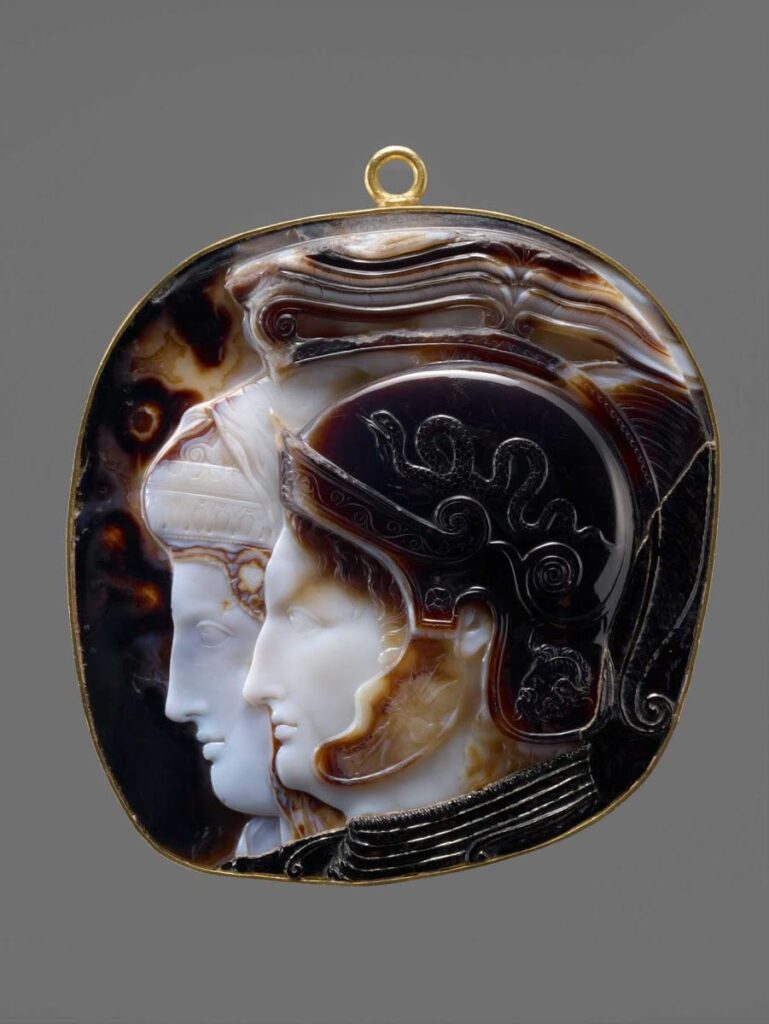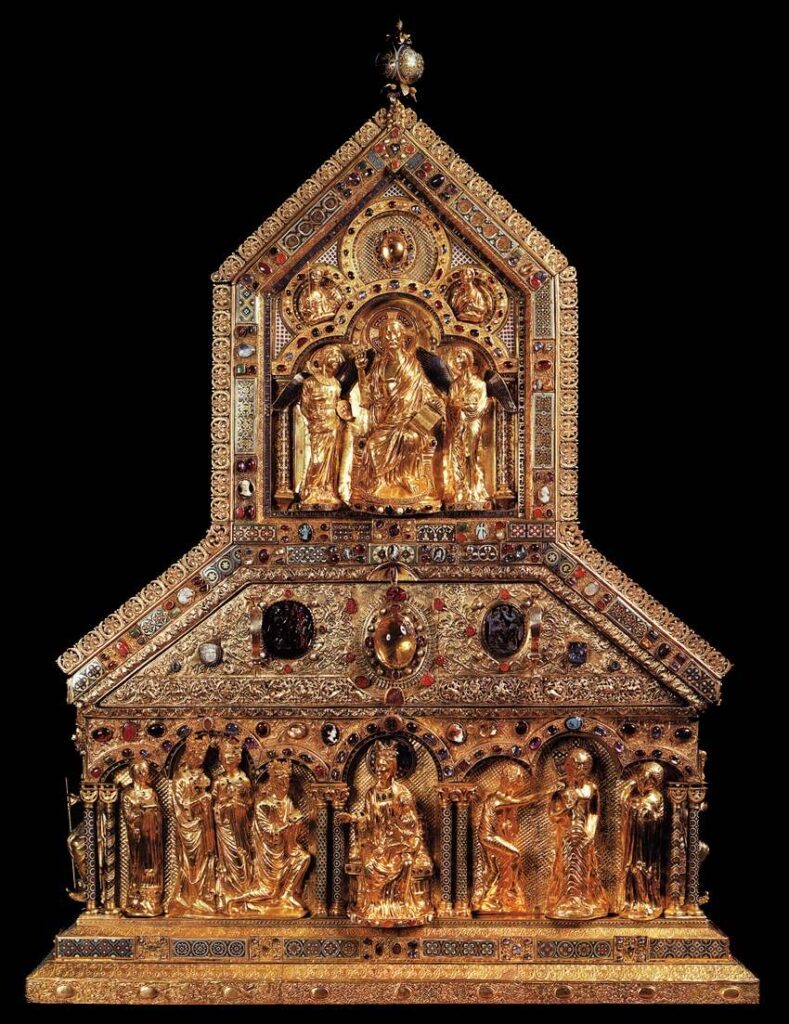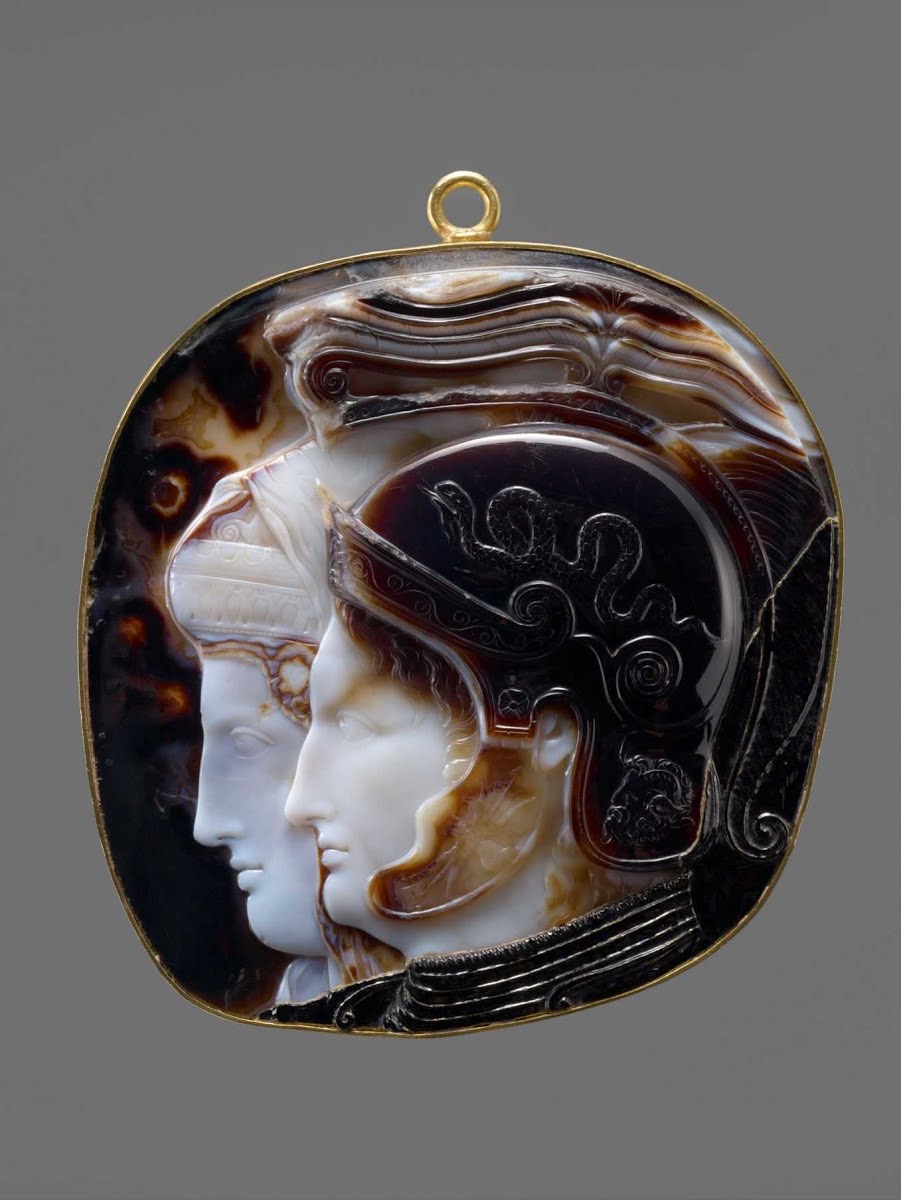‘Never been buried’ : perhaps the most romantic and captivating descriptor of any ancient artwork and never more than in the case of the so-called Vienna Cameo.
The cameo is remarkable in every conceivable dimension, not the least of which is virtuoso technique in which it was carved. The large Indian onyx consists of at least ten layers, and was painstakingly carved to utilise naturally occurring layers of cream and chocolate stone. Onyx is hard as hell, with a Mohs scale hardness of 7, and the insane skill needed to peel it like an onion was recognised and valued in the early 3rd century B.C. when it was made.
It is an object fit for royalty, and most certainly was made for it. Represented are the heads of two Ptolemaic royals two heads: a helmeted male in the foreground (Ptolemy II) and a veiled female just behind (Arisone II). Antiquity’s most fascinating woman, and the Greek world’s first incestuous power-couple.

Arsinoe II was the daughter of Ptolemy I, She was sent off on a string of political marriages: first at the age of 15 to Lysimachos, the craggy contemporary of her father (she might have poisoned his son from a previous marriage to position her own sons. Oops.). And afterwards to Ptolemy Keraunos (her half-brother). But things soured. Keraunos murdered two of her sons, after which she fled to Samothrace, and later to Alexandria. Here she set her sights on her younger brother Ptolemy II who had at that point ascended the throne, and orchestrated the exile of his wife (needs must).
The sibling-couple married in 278 B.C., becoming known as Philadephoi (‘sibling lovers’), adopting an earlier Egyptian tradition of royal siblings marrying to consolidate power. The diaphanous wedding veil Arsinoe wears in this cameo likely signals that it was in fact carved on the occasion of their much celebrated wedding.

….AND that is when the “never buried” aspect comes in. The cameo seems to have been given as a diplomatic gift over the centuries eventually ending up installed in the ornate reliquary of The Three Kings in the Cathedral of Cologne by the 13th century (likely the royal pair were interpreted as two of the Magi). The cameo was plucked out in 1574, eventually making its way to the famous collection of Vincenzo Gonzaga. By 1668 it found its way to the Imperial Collections of Vienna, and now is in the Kunsthistorisches Museum there.




